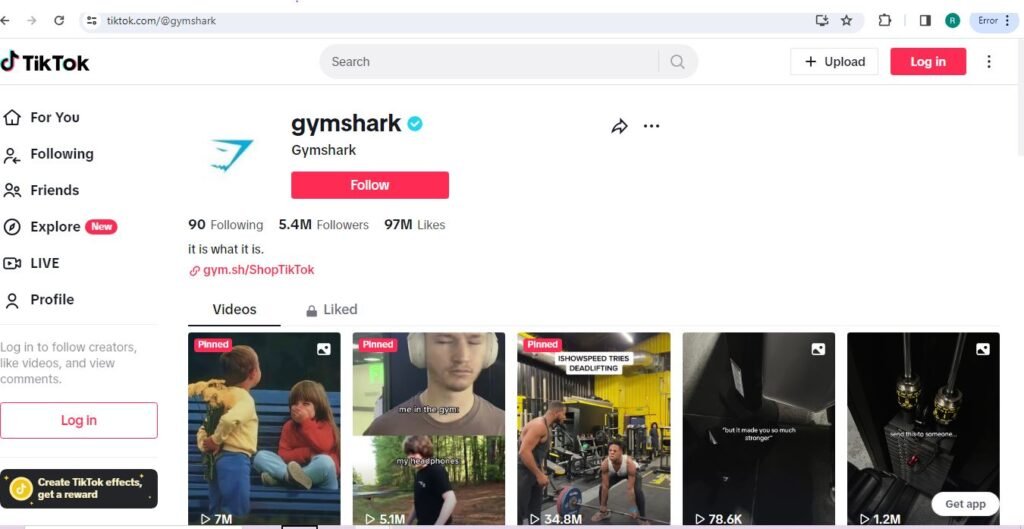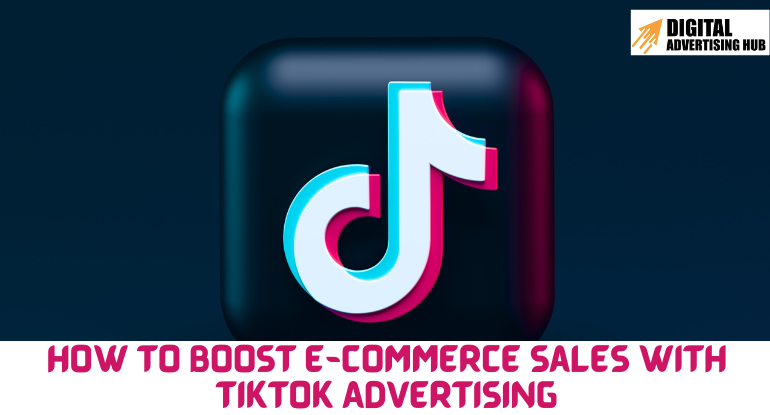Welcome to the complete guide to boosting E-commerce sales with Tiktok advertising. The e-commerce landscape is constantly evolving, with new platforms and trends emerging at a rapid pace.
In recent years, TikTok has established itself as a powerful force, captivating the attention of billions of users worldwide. This massive and highly engaged audience presents a unique opportunity for e-commerce businesses to reach new customers and drive significant sales growth.
However, navigating the dynamic world of TikTok advertising requires a strategic approach. This blog post is designed specifically for you, aiming to equip you with compelling strategies and step-by-step guidance to unlock the full potential of TikTok advertising for boosting your e-commerce sales.
During this insightful journey, you will learn;
- The unique characteristics of TikTok advertising for e-commerce.
- How to craft engaging content strategies that resonate with the TikTok audience.
- How to utilize the advanced advertising features to maximize reach and conversion.
By the end of this post, you’ll be armed with the knowledge and tools needed to implement effective TikTok advertising campaigns that drive real results for your e-commerce business. Let us get started.
The Rise of TikTok in E-Commerce Marketing
While established platforms like Facebook and Instagram have long been staples of e-commerce marketing, TikTok offers a fresh and dynamic environment for reaching new audiences.
The emergence of TikTok as a platform for e-commerce marketing can be attributed to several factors. Firstly, the platform’s algorithm-driven content discovery mechanism ensures that even smaller brands have the potential to reach a wide audience.
TikTok’s For You Page (FYP) algorithm serves users a curated feed of content based on their interests and engagement history, providing e-commerce brands with valuable visibility.
Additionally, TikTok’s emphasis on authenticity and creativity resonates with younger consumers, who value genuine brand interactions. E-commerce brands that can authentically integrate into the TikTok community and leverage its unique features stand to benefit from increased brand awareness and engagement.

Here’s what sets TikTok apart and why it’s crucial to understand its unique landscape for e-commerce success:
#1. Short-Form, Engaging Video Content
Unlike its counterparts, TikTok thrives on short-form video content (typically 15-60 seconds). This format prioritizes creativity, entertainment, and quick bursts of information.
E-commerce brands need to adapt their messaging to this fast-paced environment, focusing on visually appealing demonstrations and showcasing product benefits within a brief timeframe.
For instance, imagine promoting a new line of athletic wear. Instead of static product images, create a TikTok video showcasing the clothing in action during a workout routine. Include quick transitions and trendy music to capture attention and leave viewers wanting more.
#2. Powerful Community and User-Generated Content (UGC)
The TikTok community is known for its high level of engagement and enthusiasm for user-generated content (UGC). Challenges, branded effects, and trending sounds all contribute to a strong sense of community. E-commerce brands can leverage this by encouraging UGC that features their products.
To illustrate, imagine your business partner with a fitness influencer to create a branded hashtag challenge where users showcase their workout routines using your new athletic wear. This not only promotes your product but also leverages the influencer’s credibility and encourages organic user engagement.
#3. Unconventional Discovery and Algorithmic Power
Unlike other platforms where users primarily follow specific accounts, TikTok’s “For You Page” (FYP) prioritizes content based on interests and engagement. This allows e-commerce brands to reach a wider audience beyond their existing follower base. The key lies in creating content that aligns with current trends and resonates with the target audience.
Imagine a brand selling eco-friendly phone cases that can tap into the growing environmental awareness movement on TikTok. They can create informative videos highlighting the sustainable materials used in their products and utilize relevant hashtags like #savetheplanet to increase discoverability on the FYP.
Examples of E-commerce Success on TikTok
Several leading e-commerce brands have successfully harnessed the power of TikTok advertising. Here are a few examples:
#1. Gymshark: This popular fitness apparel company utilizes short, energetic videos showcasing their clothing in action during workouts, often featuring collaborations with fitness influencers.

#2. E.l.f. Cosmetics: E.l.f. leverages the power of UGC by partnering with beauty creators and encouraging users to share quick makeup tutorials using their products.
#3. Duolingo: The language learning app uses humor and relatable content to promote their platform. Their creative approach resonates with the TikTok audience and drives brand awareness.
By understanding these key aspects of the TikTok landscape, e-commerce businesses can develop targeted strategies to reach new audiences, build brand loyalty, and ultimately drive sales through engaging and innovative video content.
Key Strategies for Boosting E-Commerce Sales with TikTok Advertising
Now that we’ve explored the unique landscape of TikTok for e-commerce, let us examine the key strategies for crafting effective advertising campaigns.
A. Content Strategy:
#1. Leverage Trending Content:
- Stay updated on trending sounds, hashtags, and challenges: Utilize tools like TikTok’s “Discover” page and relevant hashtags to identify current trends.
- Incorporate trending elements into your content: Adapt your ads to seamlessly integrate with popular sounds or challenges, keeping your brand relevant and engaging.
- Be mindful of brand alignment: Ensure your adaptation of trends aligns with your brand voice and values to maintain authenticity.
#2. Showcase Products in Action:
- Focus on visually appealing demonstrations: Create high-quality videos that showcase the features and benefits of your products in action.
- Highlight real-life use cases: Feature your products being used in everyday scenarios to connect with viewers and demonstrate their practical value.
- Consider user-friendly formats: Utilize features like product demos, explainer videos, or “before and after” comparisons to effectively communicate product benefits.
#3. User-Generated Content (UGC):
- Encourage user-generated content: Launch branded hashtag challenges, contests, or partner with creators to incentivize user-generated content featuring your products.
- Leverage the power of authenticity: UGC fosters trust and reliability, allowing potential customers to see genuine user experiences with your brand.
- Respond and engage with user-generated content: Show appreciation for user-created content by liking, commenting, and potentially featuring it on your brand’s profile.
B. Advertising Strategy:
#1. Campaign Objectives:
- Define your advertising goals: Before launching an ad campaign, clearly define your objectives, whether it’s brand awareness, driving website traffic, or increasing conversions.
- Choose the right campaign type: TikTok offers various ad formats like In-Feed Ads, Spark Ads (leveraging organic content), and Collection Ads (showcasing product catalogs). Select the format that best aligns with your campaign goals.
#2. Targeting and Optimization:
- Utilize TikTok’s advanced targeting options: Target your ads based on demographics, interests, behaviors, and even custom audiences based on website visitors or app users.
- A/B test different ad variations: Experiment with different creatives, messaging, and targeting options to identify the most effective combinations for your audience.
- Continuously monitor and optimize your campaigns: Track key metrics like ad performance, click-through rates, and conversion rates to identify areas for improvement and optimize your campaigns for better results.
#3. Shoppable Ads and TikTok Shop:
- Utilize shoppable video ads: Integrate product links directly within your video ads, allowing viewers to seamlessly purchase featured products without leaving the app.
- Consider establishing a TikTok Shop: This feature allows brands to create a dedicated storefront within TikTok, enabling a smooth in-app buying experience for interested customers.
By implementing these key strategies for both content creation and advertising, e-commerce businesses can leverage the power of TikTok to reach a wider audience, build brand engagement, and ultimately drive significant sales growth.
Measuring and Analyzing TikTok Ad Performance
Evaluating the success of your TikTok advertising efforts requires a data-driven approach. Here’s how to effectively measure and analyze your campaigns.

Overview of Key Metrics:
- Impressions: The number of times your ad is displayed to users.
- Clicks: The number of times users click on your ad.
- Click-through Rate (CTR): Clicks divided by impressions, indicating how effectively your ad entices users to click.
- Conversions: The number of desired actions taken, such as website visits or purchases, after clicking on your ad.
- Cost per Action (CPA): The total ad spend divided by the number of conversions, indicating the cost to acquire each desired action.
- Video Completion Rate: The percentage of users who watch your entire ad video.
- Engagement Rate: The number of likes, comments, shares, and saves your ad receives, indicating user interaction and interest.
Interpreting TikTok Ads Manager Analytics
The TikTok Ads Manager provides a comprehensive dashboard with detailed insights into your campaign performance. Here’s how to navigate it effectively:
- Campaign, Ad Group, and Ad Level: Analyze performance data at different levels to understand which elements resonate most with your audience.
- Filter by Date, Device, and Placement: Gain insights into which days, devices, and ad placements generate the best results.
- Compare Performance with Benchmarks: Benchmark your metrics against industry averages to assess competitiveness and identify areas for improvement.
Refining Your Ad Strategies:
Based on your performance insights, you can continuously refine your TikTok advertising strategy:
- Optimize Ad Creatives: Experiment with different video formats, lengths, and messaging to identify what resonates best with your audience.
- Adjust Targeting and Bidding: Refine your audience targeting based on demographics, interests, and behaviors to reach the most relevant users. Optimize your bidding strategy to get the most out of your budget.
- A/B Test Different Elements: Test variations of your ad creatives, targeting options, and landing pages to identify the most effective combinations.
By diligently tracking key metrics, interpreting data from the TikTok Ads Manager, and adapting your strategies based on insights, you can continuously optimize your campaigns and maximize your return on investment (ROI) on TikTok advertising.
Conclusion
The ever-evolving landscape of e-commerce demands continuous adaptation and exploration of new marketing avenues. By harnessing the power of TikTok advertising and implementing the strategies outlined in this blog post, you can unlock a powerful tool for reaching new audiences, fostering brand engagement, and ultimately driving significant sales growth.
Remember, success on TikTok lies in:
- Understanding the unique platform dynamics.
- Crafting compelling and engaging content that resonates with the audience.
- Utilizing the diverse advertising features available.
- Continuously experimenting, analyzing, and optimizing your campaigns.
Embrace the creativity, community, and short-form storytelling that TikTok offers, and watch your e-commerce business thrive in this dynamic and engaging new space.
By following these guidelines and staying committed to continuous learning, you can effectively leverage TikTok advertising to unlock a world of possibilities for your e-commerce business.
You can do well to share your experiences, ask questions, and join the conversation in the comments section.










